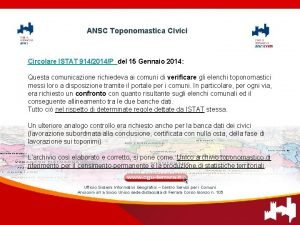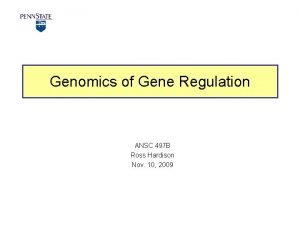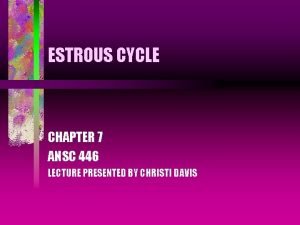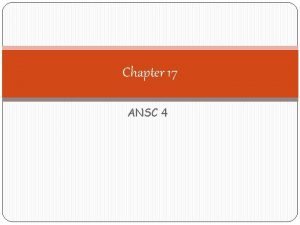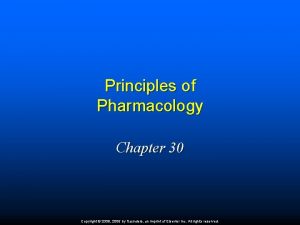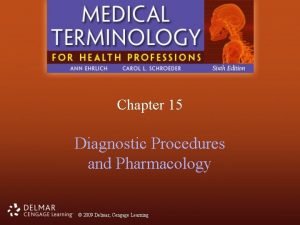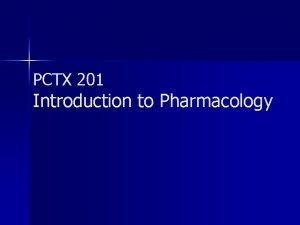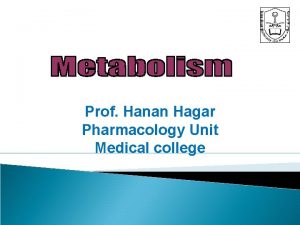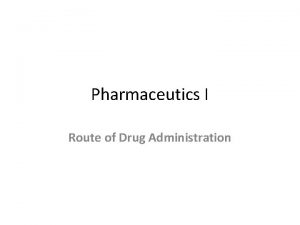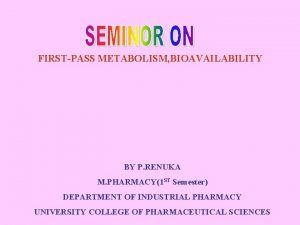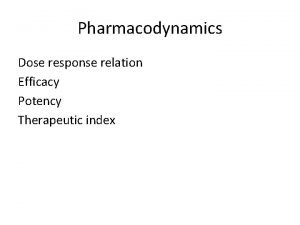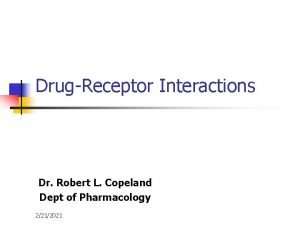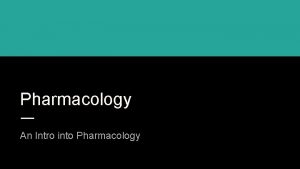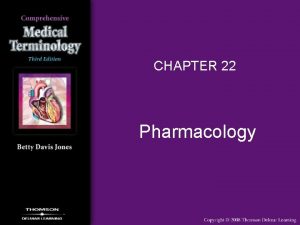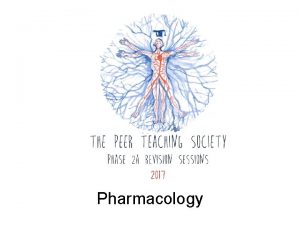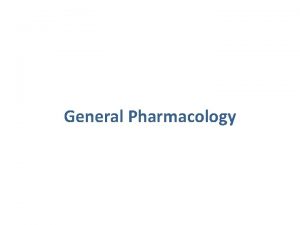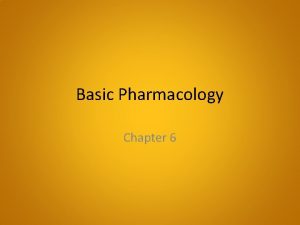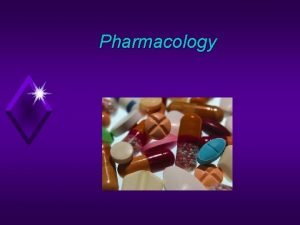Chapter 17 ANSC 4 Pharmacology Definition the study











- Slides: 11

Chapter 17 ANSC 4

Pharmacology Definition: the study of the nature, uses, and effects of drugs Common Terms Prescription: medication that may be purchased by Rx or from a licensed professional OTC: purchased without Rx Generic: medication not protected by brand name or trade mark

Basic Breakdown What type of medication? What drug category does it fall into? How much to give? How is it administered?

What type of medication? (few examples) Antitoxin: antiserum aimed at poison treatment Bacterin: bacterial vaccine Diffusion: movement from HIGH concentration to LOW Hypteronic: solution with more particles Ionized: electrically charged Regimen: course of treatment

Drug Categories Antibiotic: inhibits growth/ kills bacteria Anesthetic: produces lack of sensation Anticoagulant: inhibits clotting Antiseptic: kills/prevents growth of organisms on living tissue Disinfectant: kills/ inhibits growth of organisms on inanimate objects

How much? Basic measurements: dram, gram, centimeter, millimeter, percent etc…

How it is administered? Inhalation Intradermal, Sub. Q, Intravenous, Intramuscular (Remember the injection lab? ) Oral Rectal Sublingual Administration technique labeled by area in which it is given

Surgical Terms Branch of science that treats diseases, injuries and deformities by manual or operative methods Aseptic Technique: precautions taken to prevent contamination Avulsion: tearing away a part Dissect: cutting apart Excise: remove completely Biopsy: removal of living tissue for study or culture (aides in diagnosis) Neocropsy: postmortem examination

Surgical Equipment Autoclave: sterilize instruments Bandage: cover to prevent infection Cautery: burning to destroy tissue (prevent bleeding) Drain: channel established to allow for fluids to exit a wound Retractor: holds back tissues

Needles and Suture Blunt: not sharp Ligation: act of tying Ligature: substance used to tie Stapling

Activities Study Guide: Fill in the following categories Type of medication, Method of treatment, behavior of medication, administration technique Pages 352 -355 (End at weights and measures) Table 17 -1 Pictorial Representation of Surgical Approaches (p 360)
